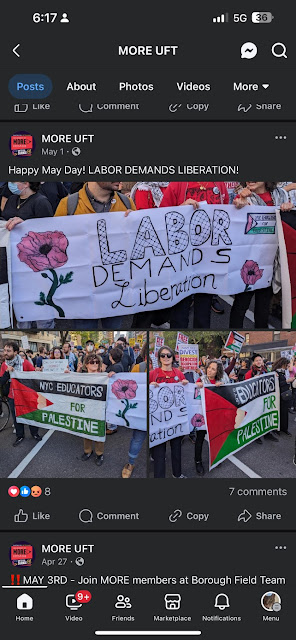Union leadership demands integrity, transparency, and unwavering commitment to member welfare. In the context of the United Federation of Teachers (UFT), where political factions vie to shape the future of New York City’s educators, the individuals representing each caucus significantly influence their credibility and effectiveness. Paul Egan’s involvement with A Better Contract (ABC) caucus raises important questions about his suitability for leadership and the judgment of the caucus itself in associating with him.
1. Concerns About Paul Egan’s Leadership Style
Paul Egan’s record in union leadership circles has been marred by controversies and criticism, particularly concerning his approach to decision-making and his interpersonal relationships within the UFT. Teachers and colleagues who have worked with or observed Egan often raise concerns about his leadership style, which has been described as divisive and confrontational.
- Authoritarian Tendencies: Critics argue that Egan exhibits a top-down leadership style that leaves little room for collaboration or dissent. This approach alienates rank-and-file members who expect transparency and inclusivity in union decisions.
- Poor Communication: Effective union leadership requires open channels of communication, especially with a membership base as diverse as the UFT. Reports suggest that Egan has struggled to maintain effective dialogue with members, leading to frustration and mistrust.
These issues suggest that Egan may lack the temperament and skill set necessary to inspire confidence among educators, especially in a caucus positioning itself as a credible alternative to Unity.
2. Questionable Ethical Decisions
Union leaders must uphold ethical standards to maintain trust among members. Egan’s tenure in union circles has been marked by actions that some members view as ethically questionable:
- Allegations of Backroom Deals: Egan has been accused of engaging in closed-door negotiations that prioritize political alliances over the needs of union members. Such behavior undermines the transparency that teachers expect from their leaders.
- Alignment with Controversial Figures: Egan’s history of associating with individuals and factions that have faced criticism for self-serving agendas raises doubts about his motivations and judgment.
These actions have tarnished Egan’s reputation, making him a controversial figure in union politics.
3. Misalignment with ABC’s Goals and Values
A Better Contract caucus has positioned itself as a reformist movement advocating for stronger contracts, greater member engagement, and increased accountability within the UFT. However, Egan’s inclusion within the caucus seems at odds with these principles:
- Lack of Reform Credentials: Egan’s record does not align with the progressive, grassroots-oriented ethos that ABC claims to champion. His leadership history suggests a focus on consolidation of power rather than empowering members.
- Undermining Credibility: By associating with Egan, ABC risks alienating members who are skeptical of his intentions and leadership style. This association undermines the caucus’s claim to be a fresh and trustworthy alternative to Unity.
Teachers who are considering supporting ABC may question whether the caucus is genuinely committed to reform or simply another political faction prioritizing power over principles.
4. Polarizing Effect on Membership
Egan’s involvement in ABC could have a polarizing effect on the caucus and the broader membership base. While some members may support him based on his past experience, others may view his leadership as a continuation of the same issues they aim to escape from Unity’s dominance:
- Divisive Figure: Egan’s reputation has the potential to create internal divisions within ABC, detracting from its ability to present a unified front against Unity.
- Eroding Member Trust: Teachers who are disillusioned with Unity may hesitate to join ABC if they perceive it as aligning with figures who do not represent meaningful change.
Unity has historically capitalized on such divisions within opposition factions, and Egan’s inclusion could weaken ABC’s ability to consolidate support.
5. Risks for A Better Contract Caucus
By associating with Egan, ABC caucus faces significant risks that could hinder its growth and success in the UFT elections:
- Perception of Poor Judgment: The decision to include Egan in a leadership or advisory capacity raises questions about the judgment of ABC’s leadership. If they are willing to align with a polarizing figure, can they be trusted to make sound decisions on behalf of members?
- Potential for Negative Campaigning: Unity caucus is likely to highlight Egan’s controversies as a way to discredit ABC as a viable alternative. This could divert attention from ABC’s platform and force the caucus into a defensive position.
These risks could diminish ABC’s ability to effectively challenge Unity and advocate for the reforms it claims to support.
6. The Need for Accountability and Reflection
ABC caucus must reflect on its decision to align with Egan and consider the broader implications for its credibility and effectiveness:
- Reevaluating Leadership Choices: If ABC is truly committed to reform, it should prioritize leaders who embody the values of transparency, inclusivity, and accountability. This may require distancing itself from individuals like Egan.
- Engaging Members: To rebuild trust and credibility, ABC should actively engage with its membership base, seeking input and addressing concerns about its leadership decisions.
By taking these steps, ABC can demonstrate its commitment to genuine reform and regain the trust of skeptical members.
Conclusion
Paul Egan’s history of controversy, questionable ethical decisions, and divisive leadership style make him a poor choice for union leadership and a liability for A Better Contract caucus. Teachers who are considering supporting ABC should scrutinize the caucus’s decision to associate with Egan and question whether it aligns with their own values and expectations for union leadership. For ABC to establish itself as a credible alternative to Unity, it must prioritize leaders who embody the principles of reform and member advocacy. Until then, Egan’s involvement will remain a significant hurdle for the caucus to overcome.
















